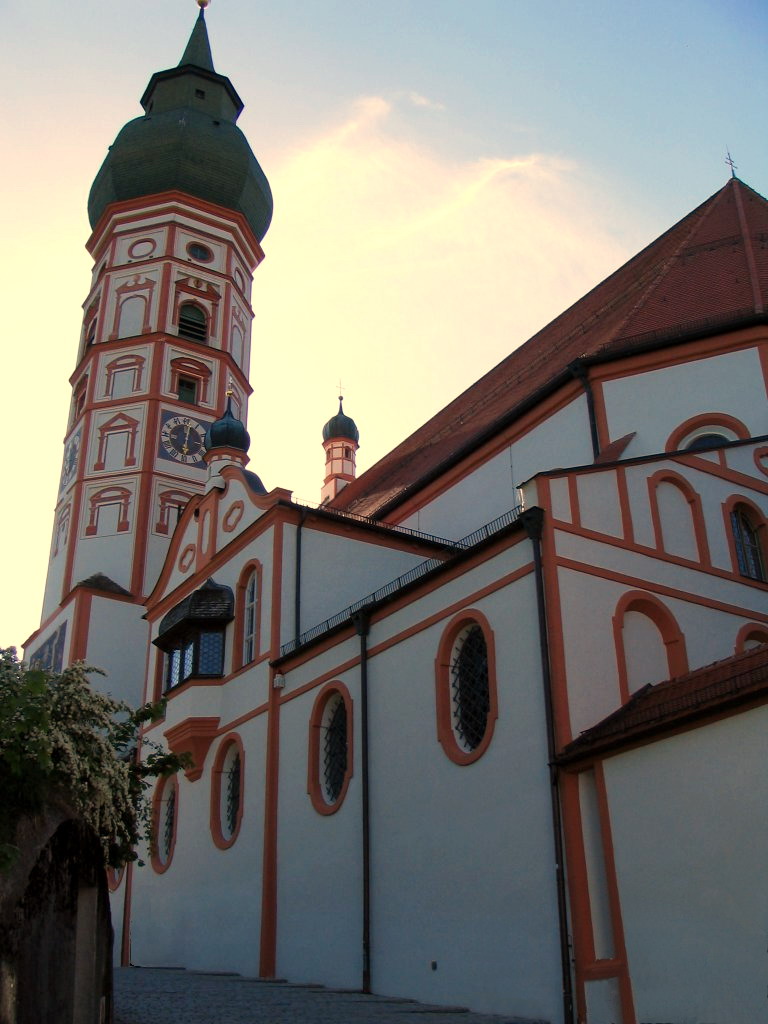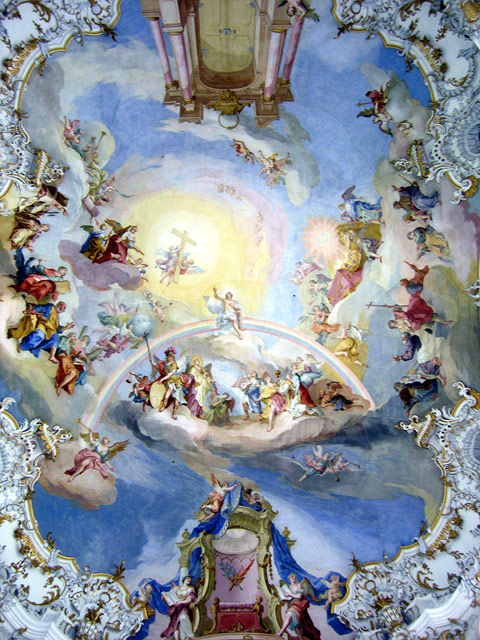|
Rasso
Saint Rasso of Andechs (also ''Rasso of Grafrath, Graf Ratt, Ratho, Grafrath, Rasso von Andechs'') (c. 900–953) was a Bavarian count and military leader, pilgrim, and saint. He was the count (''Graf'') of Dießen-Andechs, leading the Bavarians against invading Magyars in the tenth century. No contemporary ''Vita'' of Rasso has survived and various legends arose around his cult in the late Middle Ages. However, there is no reason to doubt that there existed a count named Rasso who fought against the Magyars in the 950s.Charles R. Bowlus, ''The Battle of Lechfeld And Its Aftermath, August 955: The End'' (Ashgate Publishing, 2006), 143n. As a middle-aged man, he went on a pilgrimage to the Holy Land and Rome, where he collected relics, returning to found a Benedictine abbey at Wörth, later named Grafrath after him.Ot ... [...More Info...] [...Related Items...] OR: [Wikipedia] [Google] [Baidu] |
Grafrath
Grafrath is a municipality in the district of Fürstenfeldbruck in Bavaria in Germany Germany,, officially the Federal Republic of Germany, is a country in Central Europe. It is the second most populous country in Europe after Russia, and the most populous member state of the European Union. Germany is situated betwe .... It takes its name from Saint Rasso (Ratho), a count (Graf) who founded a Benedictine Order, Benedictine abbey in the 10th century. Points of interest * Forstlicher Versuchsgarten Grafrath, an arboretum References External links ''Warburg Institute Iconographic Database'' (Photos of the interior of the church of St Rasso). Fürstenfeldbruck (district) {{Fürstenfeldbruckdistrict-geo-stub ... [...More Info...] [...Related Items...] OR: [Wikipedia] [Google] [Baidu] |
953 Deaths
Year 953 ( CMLIII) was a common year starting on Saturday (link will display the full calendar) of the Julian calendar. Events By place Byzantine Empire * Battle of Marash: Emir Sayf al-Dawla marches north into the Byzantine Empire and ravages the countryside of Malatya (modern Turkey). On his way back, he crosses the Euphrates and intercepts a Byzantine army led by Bardas Phokas (the Elder), near Marash. The Byzantines are defeated; Bardas himself barely escapes through the intervention of his attendants. His son Constantine Phokas, governor of Seleucia, is captured and held prisoner in Aleppo, until his death from an illness some time later. Europe * Summer – Liudolf, duke of Swabia, and his brother-in-law Conrad the Red rebel against King Otto I. Otto and his army fail to capture the cities of Mainz and Augsburg. He declares Liudolf and Conrad as outlaws ''in absentia''. His brother Bruno I, archbishop of Cologne, restores royal authority in Lorraine, but ... [...More Info...] [...Related Items...] OR: [Wikipedia] [Google] [Baidu] |
Andechs Abbey
Andechs Abbey is a Benedictine priory in the municipality of Andechs, in the ''Landkreis'' of Starnberg, Upper Bavaria, Germany . A place of pilgrimage on a hill east of the Ammersee, the Abbey is famed for its flamboyant Baroque church and its brewery, Klosterbrauerei Andechs. Composer Carl Orff is buried in the church. Background In 955, relics brought from Rome and the Holy Land by Rasso, count of Diessen, to his monastery at Wörth (later called Grafrath) were transferred to the ''heilege'' Berg (holy mountain) to preserve them from the ravages of the Hungarians. Around 1100, Berthold II, Count of Andechs built a new residence on a hill outside Andechs. In the 12th century three hosts, reputed to have been consecrated by Pope Gregory I and Pope Leo IX, were added to the relics at the ''heilige Berg''. The first documented pilgrimages to Andechs were in 1138, when Count Berthold ordered his subjects to make the journey to venerate the relics in the chapel of St Nicholas a ... [...More Info...] [...Related Items...] OR: [Wikipedia] [Google] [Baidu] |
Graf
(feminine: ) is a historical title of the German nobility, usually translated as "count". Considered to be intermediate among noble ranks, the title is often treated as equivalent to the British title of "earl" (whose female version is "countess"). The German nobility was gradually divided into high and low nobility. The high nobility included those counts who ruled immediate imperial territories of "princely size and importance" for which they had a seat and vote in the Imperial Diet (Holy Roman Empire), Imperial Diet. Etymology and origin The word derives from gmh, grave, italics=yes, which is usually derived from la, graphio, italics=yes. is in turn thought to come from the Byzantine Empire, Byzantine title , which ultimately derives from the Greek verb () 'to write'. Other explanations have been put forward, however; Jacob Grimm, Jacob and Wilhelm Grimm, while still noting the potential of a Greek derivation, suggested a connection to got, gagrêfts, italics=yes, m ... [...More Info...] [...Related Items...] OR: [Wikipedia] [Google] [Baidu] |
900s Births
9 (nine) is the natural number following and preceding . Evolution of the Arabic digit In the beginning, various Indians wrote a digit 9 similar in shape to the modern closing question mark without the bottom dot. The Kshatrapa, Andhra and Gupta started curving the bottom vertical line coming up with a -look-alike. The Nagari continued the bottom stroke to make a circle and enclose the 3-look-alike, in much the same way that the sign @ encircles a lowercase ''a''. As time went on, the enclosing circle became bigger and its line continued beyond the circle downwards, as the 3-look-alike became smaller. Soon, all that was left of the 3-look-alike was a squiggle. The Arabs simply connected that squiggle to the downward stroke at the middle and subsequent European change was purely cosmetic. While the shape of the glyph for the digit 9 has an ascender in most modern typefaces, in typefaces with text figures the character usually has a descender, as, for example, in . The mo ... [...More Info...] [...Related Items...] OR: [Wikipedia] [Google] [Baidu] |
German Roman Catholic Saints
German(s) may refer to: * Germany (of or related to) **Germania (historical use) * Germans, citizens of Germany, people of German ancestry, or native speakers of the German language ** For citizens of Germany, see also German nationality law **Germanic peoples (Roman times) * German language **any of the Germanic languages * German cuisine, traditional foods of Germany People * German (given name) * German (surname) * Germán, a Spanish name Places * German (parish), Isle of Man * German, Albania, or Gërmej * German, Bulgaria * German, Iran * German, North Macedonia * German, New York, U.S. * Agios Germanos, Greece Other uses * German (mythology), a South Slavic mythological being * Germans (band), a Canadian rock band * "German" (song), a 2019 song by No Money Enterprise * ''The German'', a 2008 short film * "The Germans", an episode of ''Fawlty Towers'' * ''The German'', a nickname for Congolese rebel André Kisase Ngandu See also * Germanic (other) * Germa ... [...More Info...] [...Related Items...] OR: [Wikipedia] [Google] [Baidu] |
10th-century Christian Saints
1 (one, unit, unity) is a number representing a single or the only entity. 1 is also a numerical digit and represents a single unit of counting or measurement. For example, a line segment of ''unit length'' is a line segment of length 1. In conventions of sign where zero is considered neither positive nor negative, 1 is the first and smallest positive integer. It is also sometimes considered the first of the infinite sequence of natural numbers, followed by 2, although by other definitions 1 is the second natural number, following 0. The fundamental mathematical property of 1 is to be a multiplicative identity, meaning that any number multiplied by 1 equals the same number. Most if not all properties of 1 can be deduced from this. In advanced mathematics, a multiplicative identity is often denoted 1, even if it is not a number. 1 is by convention not considered a prime number; this was not universally accepted until the mid-20th century. Additionally, 1 is the ... [...More Info...] [...Related Items...] OR: [Wikipedia] [Google] [Baidu] |
Johann Baptist Zimmermann
Johann Baptist Zimmermann (3 January 1680, Gaispoint — 2 March 1758, Munich) was a German painter and a prime stucco plasterer during the Baroque. Zimmermann was born in Gaispoint, Wessobrunn. He and his brother Dominikus Zimmermann were descended from an artist family of the Wessobrunner School. Work * 1701 stucco and fresco for the church Mariä Empfängnis of Gosseltshausen * 1707 stucco and fresco for the church Maria Schnee in Markt Rettenbach * vor 1710 und 1728: Stucco for the Tegernsee Abbey * 1709/1710: Design for the church St. Johannes in Neuburg an der Kammel-Edelstetten * 1709/1710-1713/1727 (cooperation with his brother): Fresco of Marienkapelle and stucco and fresco for the library of Reichskartause in Buxheim (Allgäu) * 1711-1713: stucco and fresco for the Klosterkirche Maria Saal * 1714: stucco and fresco of Pfarrkirche St. Sixtus von Schliersee * 1714-1722: Stucco for the Ottobeuren Abbey * ca 1715 stucco and fresco for rooms of Maxlrain castle * (s ... [...More Info...] [...Related Items...] OR: [Wikipedia] [Google] [Baidu] |
Miracles
A miracle is an event that is inexplicable by natural or scientific lawsOne dictionary define"Miracle"as: "A surprising and welcome event that is not explicable by natural or scientific laws and is therefore considered to be the work of a divine agency." and accordingly gets attributed to some supernatural or praeternatural cause. Various religions often attribute a phenomenon characterized as miraculous to the actions of a supernatural being, (especially) a deity, a magician, a miracle worker, a saint, or a religious leader. Informally, English-speakers often use the word ''miracle'' to characterise any beneficial event that is statistically unlikely but not contrary to the laws of nature, such as surviving a natural disaster, or simply a "wonderful" occurrence, regardless of likelihood (e.g. "the miracle of childbirth"). Some coincidences may be seen as miracles. A true miracle would, by definition, be a non-natural phenomenon, leading many writers to dismiss miracles as ph ... [...More Info...] [...Related Items...] OR: [Wikipedia] [Google] [Baidu] |
Shrine
A shrine ( la, scrinium "case or chest for books or papers"; Old French: ''escrin'' "box or case") is a sacred or holy sacred space, space dedicated to a specific deity, ancestor worship, ancestor, hero, martyr, saint, Daemon (mythology), daemon, or similar figure of respect, wherein they are veneration, venerated or worshipped. Shrines often contain Cult image, idols, relics, or other such objects associated with the figure being venerated. A shrine at which votive offerings are made is called an altar. Shrines are found in many of the world's religions, including Christianity, Islam, Hinduism, Buddhism, Chinese folk religion, Shinto, indigenous Philippine folk religions, and Germanic paganism, Asatru as well as in secular and non-religious settings such as a war memorial. Shrines can be found in various settings, such as Church (building), churches, temples, cemetery, cemeteries, Conservation of South Asian household shrines, museums, or in the home. However, portable shrine ... [...More Info...] [...Related Items...] OR: [Wikipedia] [Google] [Baidu] |
Abbey
An abbey is a type of monastery used by members of a religious order under the governance of an abbot or abbess. Abbeys provide a complex of buildings and land for religious activities, work, and housing of Christian monks and nuns. The concept of the abbey has developed over many centuries from the early monastic ways of religious men and women where they would live isolated from the lay community about them. Religious life in an abbey may be monastic. An abbey may be the home of an enclosed religious order or may be open to visitors. The layout of the church and associated buildings of an abbey often follows a set plan determined by the founding religious order. Abbeys are often self-sufficient while using any abundance of produce or skill to provide care to the poor and needy, refuge to the persecuted, or education to the young. Some abbeys offer accommodation to people who are seeking spiritual retreat. There are many famous abbeys across the Mediterranean Basin and Europe ... [...More Info...] [...Related Items...] OR: [Wikipedia] [Google] [Baidu] |
Bavaria
Bavaria ( ; ), officially the Free State of Bavaria (german: Freistaat Bayern, link=no ), is a state in the south-east of Germany. With an area of , Bavaria is the largest German state by land area, comprising roughly a fifth of the total land area of Germany. With over 13 million inhabitants, it is second in population only to North Rhine-Westphalia, but due to its large size its population density is below the German average. Bavaria's main cities are Munich (its capital and largest city and also the third largest city in Germany), Nuremberg, and Augsburg. The history of Bavaria includes its earliest settlement by Iron Age Celtic tribes, followed by the conquests of the Roman Empire in the 1st century BC, when the territory was incorporated into the provinces of Raetia and Noricum. It became the Duchy of Bavaria (a stem duchy) in the 6th century AD following the collapse of the Western Roman Empire. It was later incorporated into the Holy Roman Empire, became an ind ... [...More Info...] [...Related Items...] OR: [Wikipedia] [Google] [Baidu] |






